Bikinis and shorts are quite distinguishable today as the swimsuits intended for female and male users, respectively. However, during the “Roaring Twenties”, it was very hard to tell the two apart. The design was kind of unisex, with both men and women wearing full-body swimsuits, as moral norms were stricter than today.
While it might seem odd from a modern perspective, swimsuits have come a long way from bathing gowns of the 18th and 19th century, which made sure that not a single segment of a lady’s skin was visible to the observer. To be fair, the gowns also had another function ― to keep the lady safe from sunburns, but this too was considered part of the norm, as tanned skin wasn’t really desirable among aristocrats of the time.
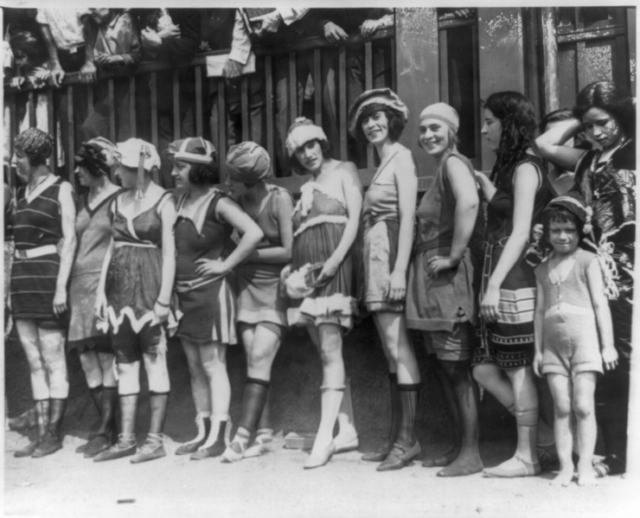

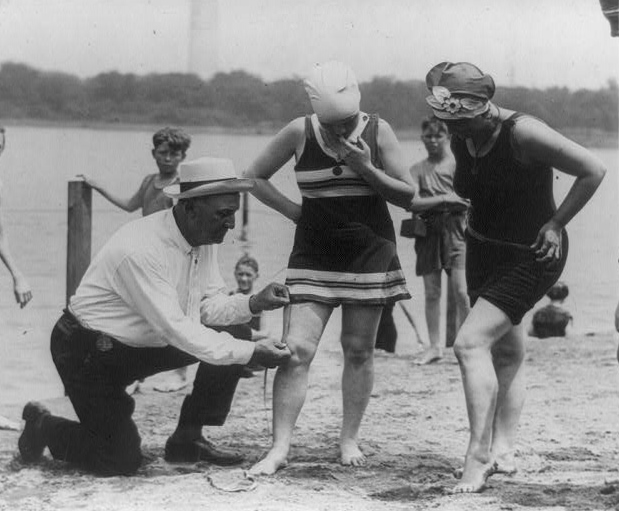

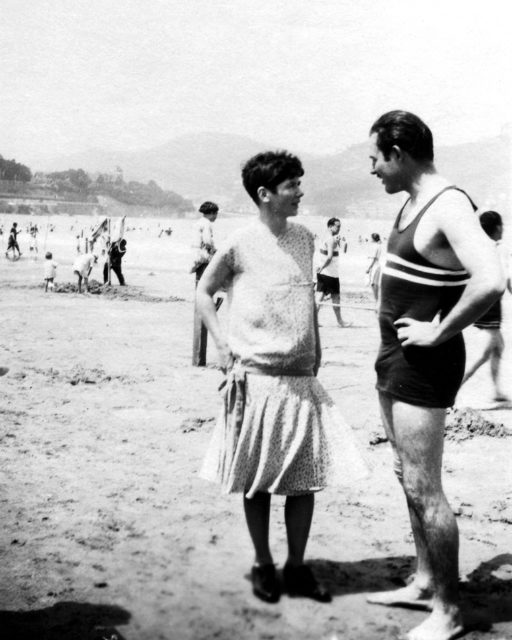
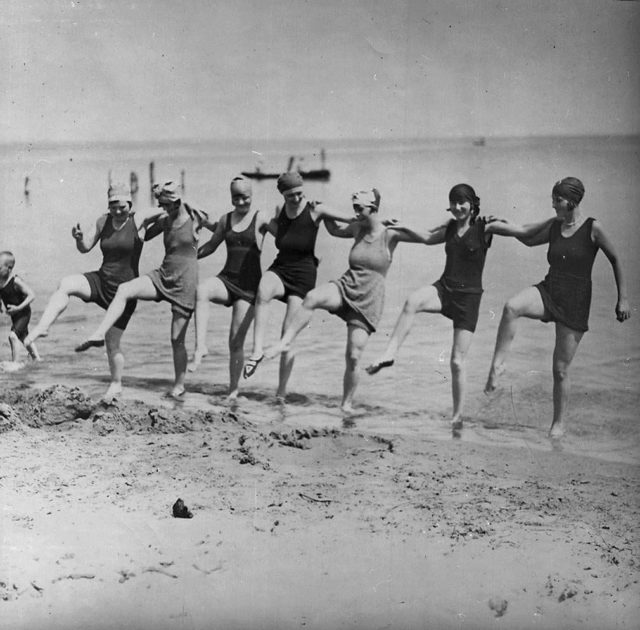

The reason behind the designs that seem so impractical today, was that going to the beach wasn’t mostly about swimming, as much as it was about enjoying the fresh air and socializing.
Therefore, the swimsuits were made of wool ― a material that would keep you warm but became very heavy once wet. With that in mind, the change actually came when swimming became a popular pastime among men and women alike. Soon the material became lighter and more suitable for water.
Featuring a simple design, most women and men wore their one-piece swimsuits, which covered their torso, leaving their legs and arms exposed. The main difference was that while men’s models featured shorts, the women’s included a dress which covered the underwear.
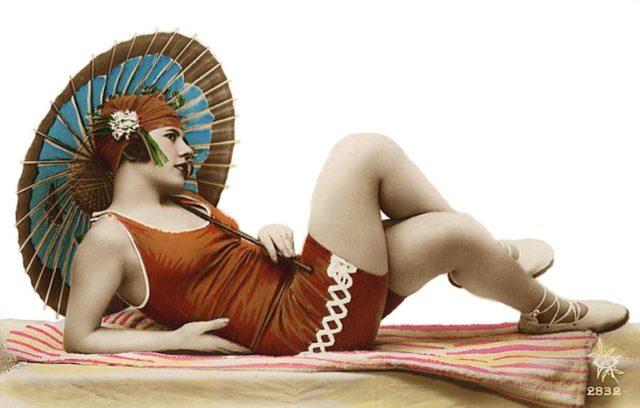
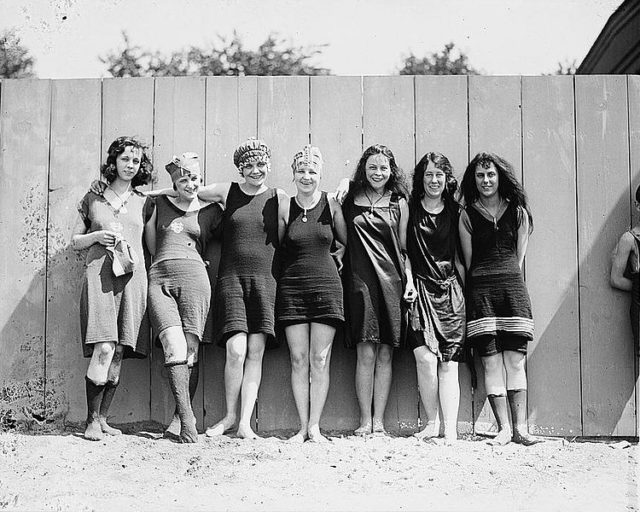
While men stuck with a simple design, a number of accessories were included for ladies, such as a swimming cap, and beach footwear.
As times changed, so did the bathing suits. By the mid-1920s, Vogue had famously proclaimed that:
… the newest thing for the sea is a jersey bathing suit as near a maillot as the unwritten law will permit.
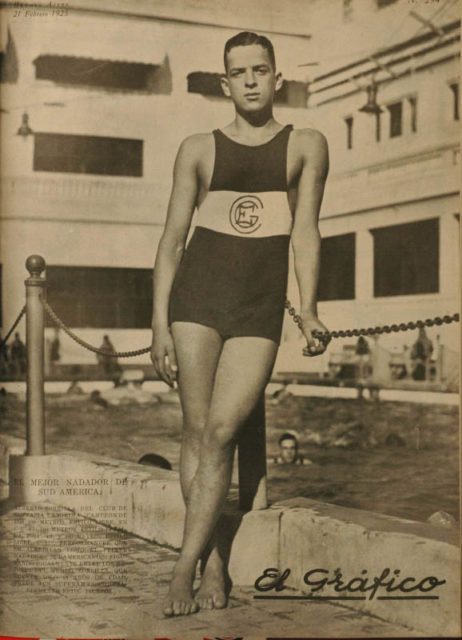
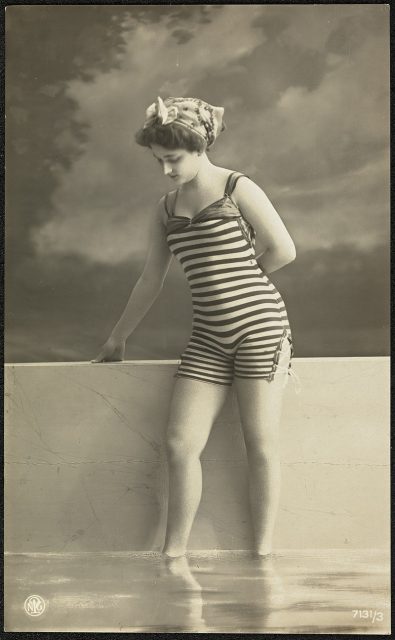

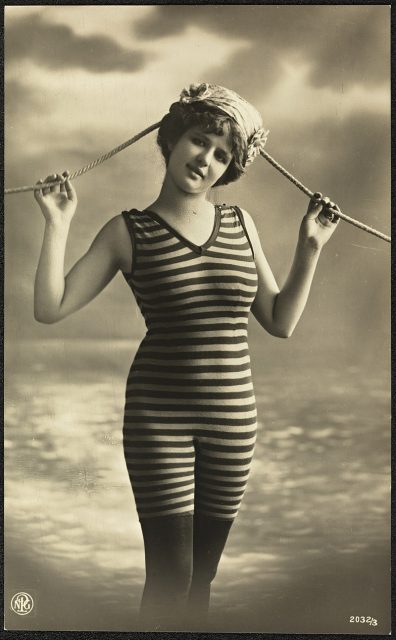

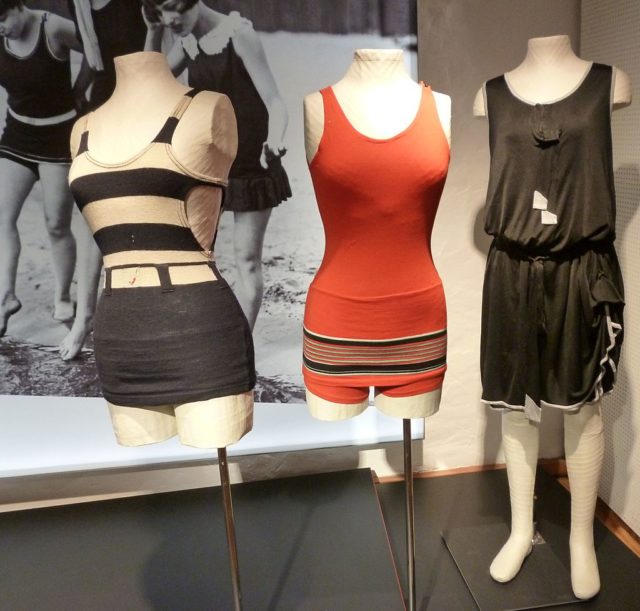
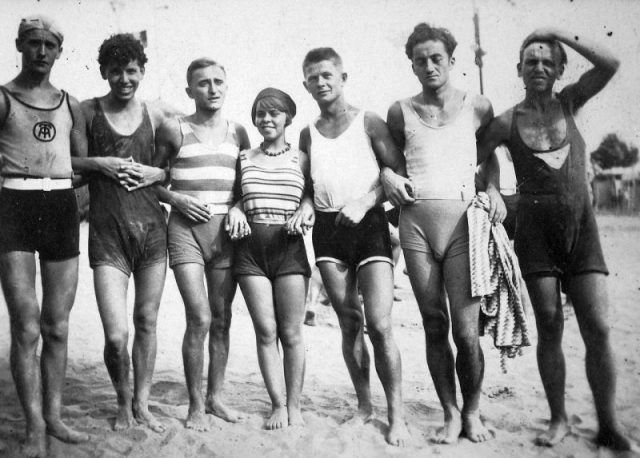

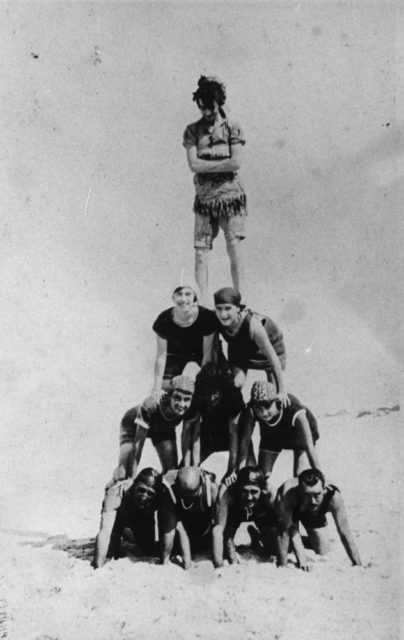
But it wasn’t only the unwritten law that dictated the fashion ― at the time, beaches were patrolled by the so-called “swimsuit police” whose task was to measure the length of women’s bathing suits and to determine whether or not were they dressed in “improper attire”.
Apart from an obligatory 10 dollar fine, some women who chose to argue with the officers were arrested and brought to court.
Read another story from us: Flappers: subverting society with their shoes
However, the public soon turned against this controversial law enforcement, and by the 1930s, the swimsuit police were no more.
